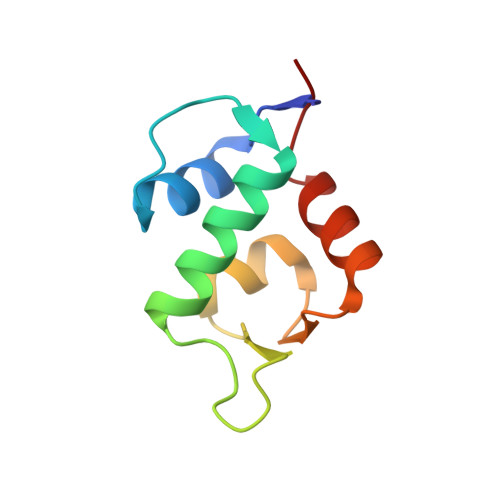Transient Protein States in Designing Inhibitors of the MDM2-p53 Interaction.
Bista, M., Wolf, S., Khoury, K., Kowalska, K., Huang, Y., Wrona, E., Arciniega, M., Popowicz, G.M., Holak, T.A., Domling, A.(2013) Structure 21: 2143-2151
- PubMed: 24207125
- DOI: https://doi.org/10.1016/j.str.2013.09.006
- Primary Citation of Related Structures:
4MDN, 4MDQ - PubMed Abstract:
Reactivation of p53 by release of the functional protein from its inhibition by MDM2 provides an efficient, nongenotoxic approach to a wide variety of cancers. We present the cocrystal structures of two complexes of MDM2 with inhibitors based on 6-chloroindole scaffolds. Both molecules bound to a distinct conformational state of MDM2 with nM-μM affinities. In contrast to other structurally characterized antagonists, which mimic three amino acids of p53 (Phe19, Trp23, and Leu26), the compounds induced an additional hydrophobic pocket on the MDM2 surface and unveiled a four-point binding mode. The enlarged interaction interface of the inhibitors resulted in extension of small molecules binding toward the "lid" segment of MDM2 (residues 19-23)--a nascent element that interferes with p53 binding. As supported by protein engineering and molecular dynamics studies, employing these unstable elements of MDM2 provides an efficient and yet unexplored alternative in development of MDM2-p53 association inhibitors.
- Max-Planck-Institute of Biochemistry, 82152 Martinsried, Germany.
Organizational Affiliation:

















